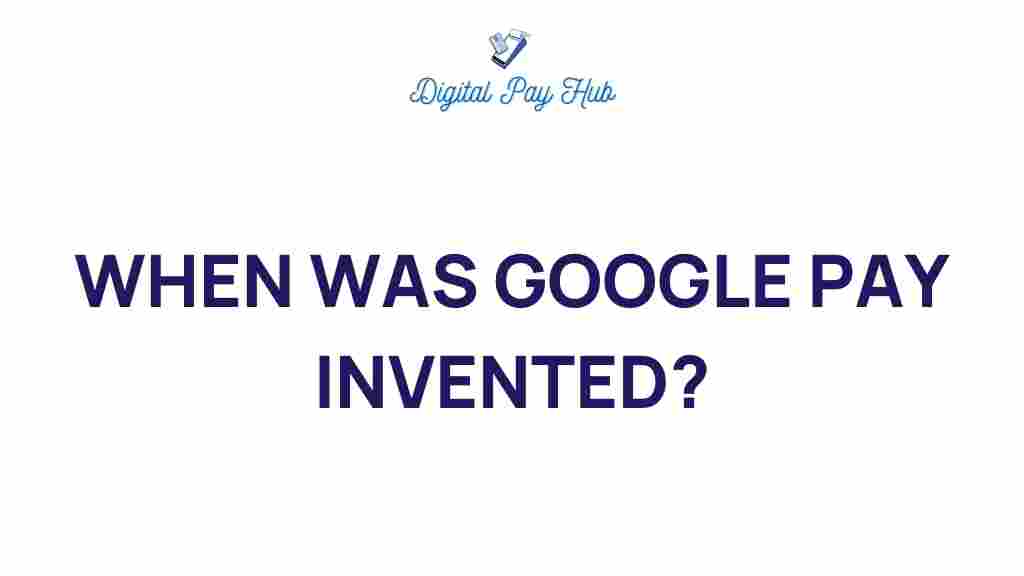Unveiling the Origins of Google Pay: When Did It All Begin?
In recent years, Google Pay has become synonymous with modern financial transactions, revolutionizing how we handle our money. As a prominent player in the world of mobile payments and digital wallets, Google Pay has shaped the landscape of fintech history. This article dives deep into the origins of Google Pay, tracing its evolution and impact on payment technology and online transactions.
A Brief History of Mobile Payments
Before we explore the origins of Google Pay, it’s essential to understand the context of mobile payments. The concept of using mobile devices for financial transactions began in the early 2000s, alongside the rise of smartphones. Here are some key milestones in the journey of mobile payments:
- 2004: The first mobile payment systems emerged, allowing users to make transactions via SMS.
- 2007: The launch of the iPhone introduced a new era of app development, leading to the creation of mobile banking apps.
- 2011: Google Wallet was launched, marking Google’s entry into the mobile payment sector.
- 2015: Google Wallet was rebranded to Google Pay, consolidating various payment services under one umbrella.
The Birth of Google Wallet
Google Wallet debuted in 2011, aiming to simplify transactions by allowing users to store credit cards, gift cards, and loyalty programs in a digital format. This was a groundbreaking step in the evolution of digital wallets, paving the way for future developments. It allowed users to make in-store purchases by tapping their phones on compatible terminals.
Transition to Google Pay
In 2015, Google Wallet underwent a significant transformation. The rebranding to Google Pay was not just a name change; it represented a shift towards a more integrated and streamlined payment experience. With this transition, Google aimed to enhance user experience by merging the functionalities of Google Wallet and Android Pay into a single platform.
Key Features of Google Pay
Google Pay brought several innovative features to the table, making it a preferred choice for users. Some key features include:
- Seamless Integration: Google Pay integrates easily with other Google services, providing a cohesive user experience.
- Security: Advanced security measures, including tokenization and biometric authentication, help ensure user safety.
- Rewards and Offers: Users can earn rewards and access exclusive offers from various merchants.
- Peer-to-Peer Transactions: Google Pay allows users to send and receive money from friends and family effortlessly.
The Rise of Digital Wallets
The success of Google Pay is part of a broader trend towards the adoption of digital wallets. With the increasing prevalence of smartphones, consumers have gravitated towards mobile payments for their convenience and efficiency. Some statistics highlighting this trend include:
- In 2023, mobile payments accounted for over 30% of all online transactions.
- The global digital wallet market is projected to reach $7.58 trillion by 2027.
How Google Pay Works
Understanding how Google Pay functions can help users leverage its full potential. Here’s a step-by-step process for using Google Pay:
- Download the App: Install Google Pay from the Google Play Store or Apple App Store.
- Set Up Your Account: Open the app and sign in with your Google account. Follow the prompts to add payment methods.
- Add Payment Methods: Link your bank account or credit/debit cards by following the on-screen instructions.
- Make a Transaction: To pay in-store, unlock your phone and hold it near the contactless terminal. For online purchases, select Google Pay at checkout.
Challenges and Troubleshooting Tips
While Google Pay is designed to be user-friendly, some users may encounter challenges. Here are common issues and troubleshooting tips:
- Transaction Declined: Ensure that your card is valid and has sufficient funds. Check if your bank supports Google Pay.
- App Not Responding: Try restarting the app or your device. If the issue persists, consider reinstalling the app.
- Unable to Add Payment Method: Check for any restrictions from your bank or ensure you are entering the correct information.
If you continue to experience issues, visit the Google Pay Help Center for additional support.
The Future of Google Pay and Mobile Payments
The future of Google Pay looks promising as the demand for mobile payments continues to grow. With advancements in payment technology and increasing consumer acceptance, Google Pay aims to expand its services, including:
- Enhanced Security Features: Continuous improvements to security protocols to protect user information.
- Increased Merchant Partnerships: Expanding the network of merchants that accept Google Pay.
- International Expansion: Google Pay is actively working on launching in more countries, making it accessible to a global audience.
Conclusion
In conclusion, the journey of Google Pay reflects the broader evolution of mobile payments and digital wallets. From its inception as Google Wallet to its current status as a leader in the fintech industry, Google Pay has continually adapted to meet the needs of consumers and businesses alike. As we look towards the future, Google Pay is poised to play a crucial role in shaping the way we conduct online transactions and manage our finances.
For those interested in the ever-evolving world of fintech history and app development, staying informed about innovations like Google Pay is essential. As payment technology advances, so too will the ways we interact with our finances, paving the way for a cashless society.
For more information on the future of digital wallets, check out this comprehensive guide.
This article is in the category Payments and created by DigitalPayHub Team
